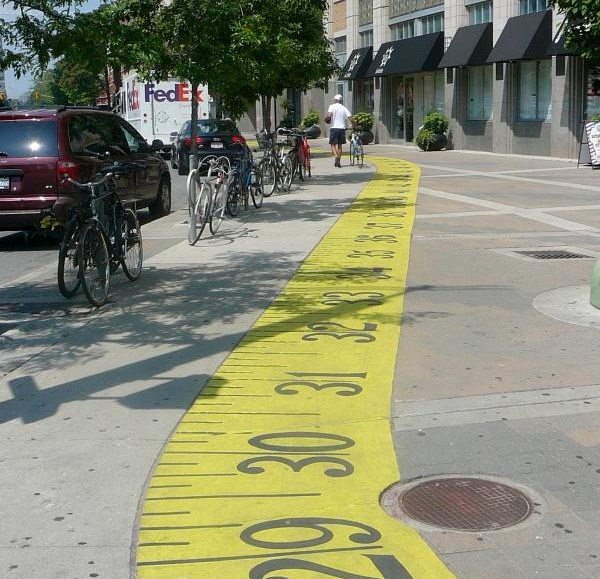
 Twice a week this month, Digiday will examine ways of “Improving Web Video.” We’ll cover both challenges and opportunities in online video and highlight brands and publishers getting it right. The series is made possible through the sponsorship of Vizu.
Twice a week this month, Digiday will examine ways of “Improving Web Video.” We’ll cover both challenges and opportunities in online video and highlight brands and publishers getting it right. The series is made possible through the sponsorship of Vizu.
Gross rating points are the currency against which TV advertising has been bought for years, but as the worlds of TV and online video collide, marketers have begun calling for a GRP-like metric for the digital space, too. Though there are clearly benefits to a standardized metric, there are drawbacks, too. With that in mind Digiday asked digital media execs two simple questions: Would online video advertising benefit from a GRP, and why?
Darren Herman, chief digital media officer, Media Kitchen
Using the GRP is selling the industry short in this day and age. It is useful to understand what percentage of your target audience is reached, but that should not be the trading currency for video both online and offline. In a world that’s increasingly digital, we’ve got better hard and soft metrics to use for knowing whether or not a video campaign is working, both for brand and direct response advertisers.
Brian Kane, chief operating officer, LiveRail
As more traditional TV buyers make the move to online, GRP obviously brings with it a very familiar metric for their work planning and measuring campaigns. But the concern is that it may not capture all of the nuances that differentiate online from other formats. Stepping back from the granular details, however, creating an appropriate set of standards that enable a buyer and an advertiser to derive cross-platform insights, while still respecting the nuances of online, would be a real positive step forward. While I haven’t seen all the details, the Nielsen cross-platform measurement solution sounds promising.
Ian Schafer, CEO, Deep Focus
My simple thought is this: GRP is great for video, especially if TV folks are buying it. It also removes any onus on action or clicks. What it doesn’t take into account, however, is the resultant “shares” online video might generate. But in the case of pre-roll, mid-roll, and post-roll, that probably isn’t happening anyway.
Koushalya Subramanian, research manager, BrightRoll
Without a doubt, online video needs a GRP. If today’s audiences are consuming video across multiple platforms (TV, online and mobile), video advertising should have a form of measurement across those platforms as well. GRP by definition measures the size of an audience reached by a specific platform. Since the TV audience and online video audience are not the same, the metric originally created for TV now needs to be adjusted to fairly measure online video’s audience reach. Advertisers can’t have an apples-to-apples comparison of audience reach without GRP for online video. This will enable advertisers to buy and measure all video with one common metric.
Vijay Rao, head of agency strategy, Adap.tv
The first thing to acknowledge is that the introduction of GRPs in online advertising is not a zero-sum game relative to replacing deeper, more traditional digital metrics. There’s undoubtedly a place for both. From an online video perspective, GRP validation through Nielsen or comScore is a significant step in the right direction. They give us a seat a at the grown up’s table and we’re now able to speak to brand advertisers in a TV-centric language they can understand. That’s important, as we’re seeing a rapid, inexorable shift toward consolidated TV/online video buying. Reciprocally, the advent of online GRPs opens a Pandora’s box for the industry. Is digital really as targeted as we promised? What’s the veracity of third party data providers? What impact does audience guarantees have on digital pricing and supposed efficiencies vs. traditional media? Ultimately, buyers shape markets. Whether you agree with the suitability of the metric or not, what’s becoming abundantly clear is that agency demand for online, independently validated GRPs, is going to have a seismic impact on the way in which digital — video especially — is bought and sold.
More in Media

Media Briefing: Publishers who bet on events and franchises this year are reaping the rewards
Tentpole events and franchises are helping publishers lock in advertising revenue.

With Firefly Image 3, Adobe aims to integrate more AI tools for various apps
New tools let people make images in seconds, create image backgrounds, replacing parts of an image and use reference images to create with AI.

Publishers revamp their newsletter offerings to engage audiences amid threat of AI and declining referral traffic
Publishers like Axios, Eater, the Guardian, theSkimm and Snopes are either growing or revamping their newsletter offerings to engage audiences as a wave of generative AI advancements increases the need for original content and referral traffic declines push publishers to find alternative ways to reach readers.





